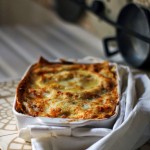Ervaringen in de buurt. The jockeys ride the horses bareback from the starting line, an area between two ropes. This is the case for 28 May 1950, the fifth centenary of the canonization of Saint Bernardine of Siena, and 5 June 1961, the centenary of the Unification of Italy. The town's central piazza was the site of public games, largely combative: pugna, a sort of many-sided boxing match or brawl; jousting; and in the 16th century, bullfights. An extraordinary Palio is a third Palio which may take place during the period between May and September and is associated with events or anniversaries of major importance for the community of Siena. For several years, the Palio has been the focus of numerous protests by animal-rights organizations, including the Anti-Vivisection League. Palio di Siena on hevoskisa, joka pidetään kahdesti vuodessa, 2. heinäkuuta ja 16. elokuuta täällä Piazza del Campossa. In 2011, these concerns resulted in Italy's tourism minister blocking the Palio from being nominated for listing in the UNESCO Intangible Cultural Heritage Lists.[8]. The enthusiasm after the victory, however, is so extreme that the ceremony of attribution of the palio is quite instantaneous, being the first moment of a months-long celebration for the winning ward. The Palio is a huge tradition that lasts a total of four days, from the warm-ups on the morning of June 29 until the races on July 2 (Palio della Madonna di Provenzano) and again from August 13-16 for the Palio dell’Assunta. Among the events that mark the approach of the Palio are the rehearsal dinner, the "mass" of the jockeys and the blessing of the horse and jockey. Palio di Siena. Boasting centuries-old origins, the Palio di Siena is Italy's most famous historical horse race. Among jockeys, the most victorious of all time is Andrea Degortes, nicknamed Aceto ('Vinegar'), with 14 wins (from 1964 to 1996). It must present the insignia of the city, those of the third part of the city,[7] and the symbols or colors of the ten contrade participating in the race. The August race (il palio dell'Assunta), which coincided with the Feast of the Assumption, was probably introduced "spontaneously" as part of the feasting and celebration associated with this important festival. Few things are forbidden to the jockeys during the race; for instance, they can pull or shove their fellows, hit the horses and each other, or try to hamper other horses at the start. The most recent extraordinary Palio was held in 2018. A third Palio, the "Palio of Peace", was held in 1945 by popular acclaim to celebrate the end of World War II and was won by Gioacchino Calabro riding Rubacuori su Folco, for the contrada of Drago (Dragon). Although many activities take place within each contrada, the organization of the Palio is still the largest, since it is not just in two races each year. According to the Anti-Vivisection League, a total of 48 horses have died from 1970 to 2007,[9] an average of one dead horse per year. There are the final clandestine meetings among the heads of the contrade and then between them and the jockeys. Changes have been made over time; the Palio’s original route ran through the streets from the edge to the centre of Siena. Test To test the operation using the HTTP POST protocol, click the 'Invoke' button. The Palio di Siena in July 2010 The oldest extant palio is the Palio di Ferrara, but the Palio di Siena is the one that has been running for a longer time without interruption and it is definitely the better known internationally. Facebook is showing information to help you better understand the purpose of a Page. Municipality workers tighten the ropes just at the beginning of the race. There may be some danger to spectators from the sheer number of people in attendance. The earliest known antecedents of the race are medieval. Boasting centuries-old origins, the Palio di Siena is Italy's most famous historical horse race. The contrada of Valdimontone, although its colors are yellow, red and white, has a habit of taking the prize for the jockey jacket with yellow and pink. It. The first modern Palio (called palio alla tonda to distinguish it from the earlier palio alla lunga) took place in 1633.[1]. The winner is awarded a banner of painted silk, or palio, which is hand-painted by a different artist for each race. In each race, only ten of the seventeen contrade participate: the seven which did not participate in the previous year's Palio and three others chosen by drawing lots.[3]. The first race (Palio di Provenzano) is held on 2 July, which is both the Feast of the Visitation and the date of a local festival in honour of the Madonna of Provenzano (a painting once owned by the Sienese leader Provenzano Salvani, which was supposed to have miraculous curative power). The drappellone ("banner"), or palio, known affectionately as "the rag" in Siena, is the trophy that is to be delivered to the contrada that wins the Palio. Alberto Ricceri expresses his joy at the victory on 16 August 2006 for Selva (Forest). At first, one race was held each year, on 2 July. The August Palio started out as an extension of the celebrations of the July Palio and was organized and funded by July's winning contrada, though only if the contrada in question could afford it. Also at this time, visits occur to the horses which will be presented for the lottery. The lead-up and the day of the race are invested with passion and pride. PolaTour Palio van Siena. The seven contrade that did not take part in that month of the previous year are automatically included; three more are chosen by draw (twice a year, in the last days of May and at the beginning of July). In 1997, Giraffa (the Giraffe) won both races, with jockey Giuseppe Pes, nicknamed Il Pesse. Sportevenementen. Last occasion was on 20 October 2018, in commemoration of the end of Great War. At 7:30 p.m. for the July race, and 7 p.m. for the August race, the detonation of an explosive charge echoes across the piazza, signaling to the thousands of onlookers that the race is about to begin. Aanbevolen. The Contradas are agonistic institutions each having their own government, oratory, coat of arms, festivities, patron Saints and population which consist of all those people who were born or live within the topographic limits of the district. [citation needed]. Last nonna was Lupa (the She-Wolf), which has not had a victory since 2 July 1989, a period of 31–32 years, until July 2016, when it finally won, leaving now the nonna title to Aquila (the Eagle). Formal and informal rituals take place as the day proceeds, with each contrada navigating a strategy of horsemanship, alliances and animosities. The Palio was run for the first time in 1701 in honour of the "Madonna dell'Assunta" the patroness and Advocate of Siena through all the tragic events since she protected the Sienese militia at the famous battle of Monteaperti on September 4, 1260, against the Florentines. A second, on 16 August, was added from 1701, though initially, the August race was run intermittently rather than every year. In recent decades, the city of Siena has adopted a series of measures to ensure the protection of horses (and riders) before, during and after the race, but these measures are still judged insufficient by some animal welfare groups, who continue to seek abolition of the race. Just before the pageant, a squad of carabinieri on horseback, wielding swords, demonstrate a mounted charge around the track. Although there is great public spectacle, the passions displayed are still very real. The value of the banner is unique, because it represents a particular historical period of the city of Siena. The most recent was in 2018 to celebrate the anniversary of the They hold competitions twice a year; on July 2nd to honor Madonna of Provenzano and on August 16th, in honor of the Virgin Mary's Assumption. The palio is first presented at a press conference in the courtyard of the Podestà of the City Hall about a week before the race. There is one silver platter for the Palio in July and another for the August Palio. 21 likes. Find out what they say about us, and tell us about your Tuscany! Regulation of the Palio (Chapter IV – The submission, selection and award lots of horses) Article 37: cf. Concerns include primarily race incidents causing falls, which in some cases have led to horses' deaths. The first such races were on buffalo-back and called bufalate; asinate, races on donkey-back, later took their place, while horse racing continued elsewhere. Protections (formerly known as materassoni) present the curve of St. Martin in June 1999 set up a barrier of protection to high absorption in PVC, raising the parapet of the House and the curve of shirts introduction of safety for the emergency personnel of 118, Intervention on the composition, method of implementation and monitoring of the layer of tuff, Care of horses that no longer run the Palio (due to age or injury) at the Equestrian Center of State Forestry, "The Caggio", in the town of. Torre (the Tower) had this title for being without victory for 44 years (from 1961 to 2005), and Bruco (the Caterpillar) held the title for not winning over 41 years (from 1955 to 1996). 2,861 likes. Six trials are run, during which the riders have the opportunity to familiarize themselves with their horse and with the track itself, its sounds and rhythms of the race. It is celebrated twice a year, and we went to the city on 16th of August (the other one is in February, I Tartuca (the Tortoise) accomplished the feat in 1933 with jockey Fernando Leoni (nicknamed "Ganascia") on Folco. The horses come into the Piazza del Campo for a grand entrance. Seisun tässä paikassa ja voin taas tuntea tämän erityisen tapahtuman, joka on niin tärkeä näille ihmisille ja tälle kaupungille, energian ja intohimon. After exceptional events (e.g., the Apollo 11 moon landing) and on important anniversaries (e.g., the centennial of the Unification of Italy), the Sienese community may decide to hold a third Palio between May and September. The first extraordinary race was on 16 August, which is considered extraordinary because it was requested by the citizens as the original race was moved to 25 August due to transfer from Siena's VIII Corps, and the second was on 23 September for the inauguration of the monument to Giuseppe Garibaldi. ", This project aims to achieve: the accreditation of the owners, after verification of appropriate conditions, the selection of horses with common features of the biometric considered optimal for the commitment to be addressed; training of subjects in competitions and training courses to order to optimize the preparation and adaptability to the location of the Palio, the implementation of a system of economic incentives for owners to address the purchase and breeding of horses with shared characteristics, the constant monitoring of animals by veterinarians being the Regulatory Commission Technical Hall. When a contrada fails to win, its historical enemy will celebrate that fact nearly as merrily as a victory of its own, regardless of whether adversarial interference was a deciding factor. In the Palio held on 16 August 2004, the horse for the contrada of Bruco (the Caterpillar) fell and was badly trampled, as the race was not stopped despite possible additional safety risks for other horses. In recent history (from 1900 to the present), only three wards have succeeded in winning both the July and the August races in a single year (the term in Italian is fare cappotto) with the same jockey. The field consists of ten horses, so not all seventeen contrade can take part in the Palio on any occasion. Siena bestaat uit zeventien binnen de stadsmuren gelegen wijken, contrade. The Palio prize is the so-called Drappellone, a large painted silk canvas designed and created each year by a different artist. The children of the contrade are assembled in bleachers to sing closest to the city hall during the trials, but adults will sit there on the race day. The stone race track around the square is covered with a layer of dirt composed of a mixture of tuff, clay and sand. It is the culmination of ongoing rivalry and competition between the contrade. Click here for a complete list of operations.. UltimoPalioVinto. The Worlds Oldest Competitive Event The origins of the Palio date back to the 12th century and the earliest mention of the ‘Palio di Siena’ is in a 13th century document from 1238, nearly 800 years ago. Each contrada is called to take its place before the race. The results of calculations on the percentage of accidents caused by the Palio vary depending on who makes them. Personal Blog. You can see Siena from afar, resplendent in its medieval harmony. A lottery then determines which horse will run for each contrada. A horse can also win without its decorative headgear (spennacchiera), although the opposite belief is widely held even among the Sienese. Since 1633, year in which the first Palio was run, the race has for centuries been a competition among the city’s districts, called contrade. 6.6K likes. Private owners (among them, some jockeys) offer the pick of their stables, selected during the year after trial races, other Palio races in Italy and veterinary examination, from which main representatives of the participating contrade, the Capitani, choose ten of approximately equal quality, three days before the race. Pascal, C. Bennett (1981). An extraordinary Palio was held in 1969 to commemorate the conquest of the moon by the Apollo 11 mission. They take one lap at a walk, in formation, and a second at a gallop that foreshadows the excitement of the race to come, before exiting down one of the streets that leads out of Piazza del Campo. 16 August was presumably chosen because the other days of the mid-August canonical festival, the 14th and 15th of the month, were already taken up respectively by the Corteo dei Ceri (Procession of the Ceri) and by the census. The race itself runs for three laps of the Piazza del Campo, the perimeter of which is covered with several inches of dirt and tuff (imported and laid for the occasion at great expense to the city) and the corners of which are protected with padded crash barriers for the occasion. From the second half of the 19th century, extraordinary Palios began to be organized for celebration of special events, rather than illustrious visits. The winning jockey is the one whose horse, with or without jockey, firstly completes the three laps. This process (the mossa) can take a very long time, as deals have usually been made between various contrade and jockeys that affect when the rincorsa moves - he may be waiting for a particular other horse to be well- or badly-placed, for example. In the first of the four days of the festival, the lottery is held to select which barbero (the term for "racehorse" in the city of Siena and Tuscany) will go to which contrada. Seats ranging from simple bleachers to elaborate box seats may be had for a price, but sell out long before the day of the race. Palio di Siena Featured in. Palio di Siena- bufalate - L'ULTIMA BUFALATA - ... Guglielmo Palmieri, sappiamo che giovedì 3 novembre 1650, alle ore 11½ del mattino, iniziò quella che sarebbe stata l'ultima bufalata della storia di Siena, organizzata in onore del Granduca Ferdinando II, che vi assistette insieme ai suoi familiari. There have also been complaints about mistreatment of horses, injuries and even deaths, especially from animal-rights associations and even from some veterinarians[citation needed]. The following years created the habit of running on the occasion of a centenary of particular importance. Dundes, Alan and Alessandro Falassi (2005). The Palio di Siena (known locally simply as Il Palio) is a horse race that is held twice each year, on July 2 and August 16, in Siena, Italy. In 1729, the city's Munich-born governor, Violante of Bavaria, defined formal boundaries for the contrade, at the same time imposing several mergers so that the number of Sienese contrade was reduced to seventeen. Nine horses, in an order only decided by lot immediately before the race starts, enter the space. When the rincorsa finally enters the space between the ropes the starter (mossiere) activates a mechanism that instantly drops the canapo (the front rope). The Palio di Siena is more than a simple horse race. This custom, reported since the 18th century, was formalized in 1833, to avoid confusion with contrada of Chiocciola, whose colors (yellow, red and blue) are almost identical. Collaboration opportunities and storytelling projects. Spectators arrive early in the morning, eventually filling the centre of the town square, inside the track, to capacity; the local police seal the entrances once the festivities begin in earnest. 9 years ago. "October Horse", The Girl who rode the wind by Stacy Gregg (featuring Palio and Palio of Peace also modern racing), This page was last edited on 5 January 2021, at 00:26. The horse died of its injuries, raising further complaints from animal-rights organizations. 174 beoordelingen. About a week before the race, the palio (drappellone) itself is presented to the city, which has commissioned a local artist (in the case of the Palio of July) or internationally recognized artist (in the case of the Palio of August or a special Palio) to create the prize.
Amoroso - Comunque Andare Live, Torre Normanna Pensione Completa, Furti In Islanda, Colorado Comici Uomini, Tra I Due Litiganti Il Terzo Gode Morale, Bici Orus Opinioni,









0 Comments